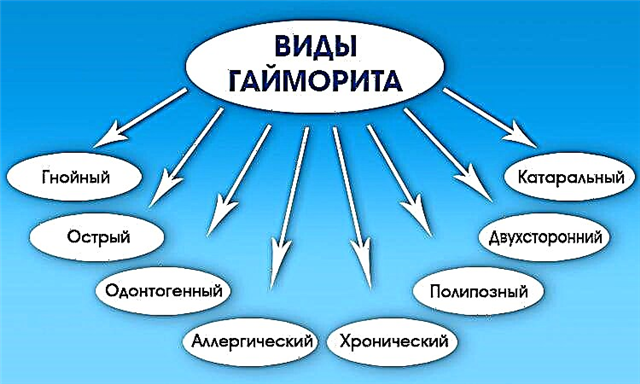Regulatory mechanisms restore the changing pressure during the day, but sometimes this cannot be achieved. Hypertensive patients are people with high levels of blood pressure. The data on the tonometer are quite relative, because for different categories of the population there are their own limits of the norm. Without a thorough diagnosis, no doctor can “sum up”.
Diagnostics

For the diagnosis of hypertension, there are a number of examinations that have specific goals. These include confirmation of a consistently high level of pressure, exclusion of secondary causes that may become major for hypertensive patients, assessment of the stage of the disease, and the degree of risk of complications. The diagnosis is established after going through the following stages:
- Collecting information concerning the patient's illness and life (history).
- Inspection and examination.
- Laboratory analyzes.
- Instrumental research.
In the process of talking with the patient, it is important to collect all the data that relate to the disease and can help in establishing the diagnosis. Initially, they learn about all the complaints that bother the patient, the presence of concomitant diseases, hereditary burden. If high blood pressure was previously registered, then it is specified whether the patient was taking medications to stabilize it to normal.
It is important to constantly monitor these indicators. The procedure is carried out in a quiet environment, before starting the procedure, the patient needs a short rest (about 10 minutes). The pressure measurement is performed on both hands. In the presence of high data, the procedure is repeated after 1.5-2 hours.
After the survey, an examination is carried out in the form of examination and palpation of large vessels, the region of the heart. Then, when listening, they pay attention to the appearance of extraneous noise. In addition to examining the cardiovascular system, the condition of the thyroid gland and kidneys is of great importance. The examination necessarily includes measuring the level of pressure on the hands with a difference of several minutes. The procedure is repeated after 10-15 minutes.
After a thorough questioning and examination, the patient is sent for tests. The list for hypertensive patients includes the following studies:
- Blood test (hemoglobin, hematocrit, glucose, potassium, calcium, creatinine, cholesterol, triglycerides, protein).
- Urinalysis to determine protein and glucose.
The mandatory list includes instrumental research methods for hypertensive patients. The main ECG is considered, which allows you to assess the work of the heart. Additionally, an echocardiogram is performed, allowing you to examine the condition of the valves, walls and the presence of defects. Doppler ultrasonography can be used to assess the degree of permeability of blood through the vessels. X-ray examination allows you to examine the condition of the arterial wall, the presence of defects or plaques.
An obligatory step in the examination of hypertensive patients is a chest x-ray. It helps to detect pathological processes in various parts of the heart - this is an increase in its size or a decrease. Next, the patient is referred for ultrasound of the kidneys and adrenal glands. This is due to the development of complications arising from high blood pressure or due to pathology that develops in these organs, and causes hypertension.
Patients must undergo an examination of the fundus by an ophthalmologist. The heart and retina are the main targets of high blood pressure. On an ultrasound of the kidneys and adrenal glands, their condition is assessed. If there is a suspicion of a stroke, the patient must be referred for an MRI of the brain in order to exclude this pathology. If renal pathology is detected on ultrasound, microscopy of a urine smear is performed.
To diagnose severe hypertension, there is the following list of studies:
- polysomnography;
- cardiorespiratory monitoring;
- computer pulse oximetry.
With the help of polysomnography during sleep, various functions of the body are examined in different phases, when it is possible to detect any deviations from the norm. Monitoring allows you to assess the period after falling asleep: to identify in a hypertensive patient a breathing disorder that negatively affects the cardiovascular system. Pulse oximetry is a technique based on detecting disturbances that occur during sleep. This leads to insufficient oxygen saturation of the blood, which leads to diseases of the heart and blood vessels.
A hypertensive person is a person suffering from symptoms that are caused by high blood pressure (more than 140/90 mm Hg) where the main cause is a sedentary lifestyle, stress and bad habits.
Indicators in such people return to normal when treated with antihypertensive drugs and following medical recommendations.
Monitoring the state of hypertensive patients

The main method for monitoring the pressure level is considered to be constant measurement. Without this, it is impossible to determine the severity of the condition in order to begin treatment. Controlling blood pressure is important not only when you feel unwell. The procedure is performed at least 2 times a day, if the condition is disturbed and constantly increased indicators during the measurement. At least 2 times a year, the patient must undergo a preventive examination by a cardiologist or therapist, take tests and additional studies. If necessary, a hypertensive patient is sent for examination several times a year. The high pressure control list includes the following:
- General blood analysis.
- Biochemical analysis to determine the level of glucose, cholesterol, lipoproteins.
- General urine analysis.
- ECG.
- Fundus examination by an ophthalmologist.
Hypertensive patients are also recommended to keep a diary, where all blood pressure indicators will be recorded during the day. This will assess the severity of the condition and the effectiveness of the treatment. Long-term illness can lead to complications. These include kidney disease. To avoid this or identify it in time, it is recommended to visit a urologist.
Incidence statistics
According to statistics, the incidence in Russia is gaining epidemic proportions. According to the latest obtained indicators, among men under the age of 29 years (7%) there are problems with blood pressure. Until the age of 39, these figures increase to 16%. Men under 49 years of age suffer from hypertension in 27% of cases, and those over this age have a consistently high level of pressure in 35%. According to statistics, women under 70 have the same problems. By the age of 39, almost every 14th person suffers from hypertension.
To date, there is no way to cure hypertension. To try to avoid this disease, it is necessary to follow medical recommendations, this is especially important for people at risk of its occurrence.
In the presence of hypertension, it is important not only to start treatment correctly, but also to undergo annual examinations in order to control the condition. The number of visits to the doctor is determined by the severity and possible complications.



